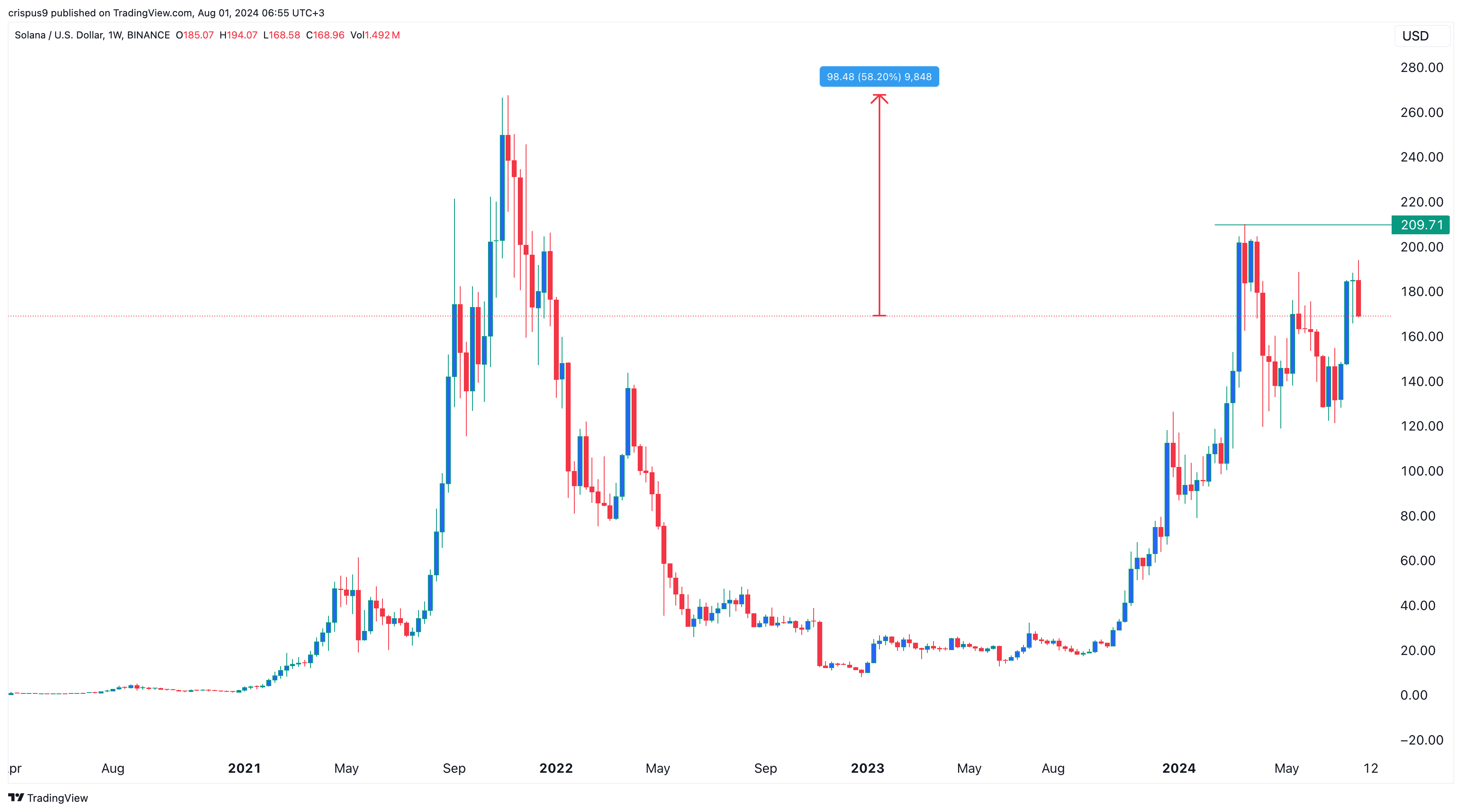Solana price has fallen for four consecutive days this week as sentiment in the crypto industry waned. After soaring to a multi-month high of $194.10 on Monday, the SOL token has slumped by 13% to $170.
Solana price has slumped
Solana’s sell-off has mirrored that of other cryptocurrencies, such as Bitcoin (BTC) and Ethereum (ETH), and meme coins, such as Mog Coin, Popcat, and Bonk.
The crash started after the US government moved Bitcoins worth $2 billion for the first time in years. Some analysts predicted that the government wanted to sell these coins as Germany did a few weeks ago. However, data from Arkham showed that the government moved the coins to a custodial account.
Meanwhile, data by Polymarket shows that the Solana token will not rise to a record high this year. A bet whose pool stands at over $254,372 has a 57% chance that the token will not rise above $259.90 in 2024. 31% of the participants believe it will hit its ATH in Q4, while 19% expect it to do that in either August or September.
To hit its all-time high of $259, Solana’s price needs to rise by over 58% from the current price. While this is possible, a few things need to happen. First, Bitcoin needs to rise and cross its all-time high of $73,400. As the biggest cryptocurrency in the world, Bitcoin sets the tone in the crypto industry.
Second, Solana also needs to flip the year-to-date high of $209.7. Such a move will mean more bulls are left in the market to push it higher. It will also invalidate the double-top chart pattern that has formed recently.

Potential Solana ETF could be a catalyst
Third, and most importantly, Solana needs a big catalyst to hit its all-time high. One of these catalysts could be the application and potential approval of spot SOL ETFs. VanEck has already applied for the fund, and companies like Blackrock and Franklin Templeton are expected to do the same soon.
Finally, the Federal Reserve will likely need to get involved as well. In its July meeting, the bank hinted that the door was open for a rate cut in September. The next US jobs and inflation data will influence such a cut. If the unemployment rate continues rising, the bank will cut rates to stimulate the economy.













